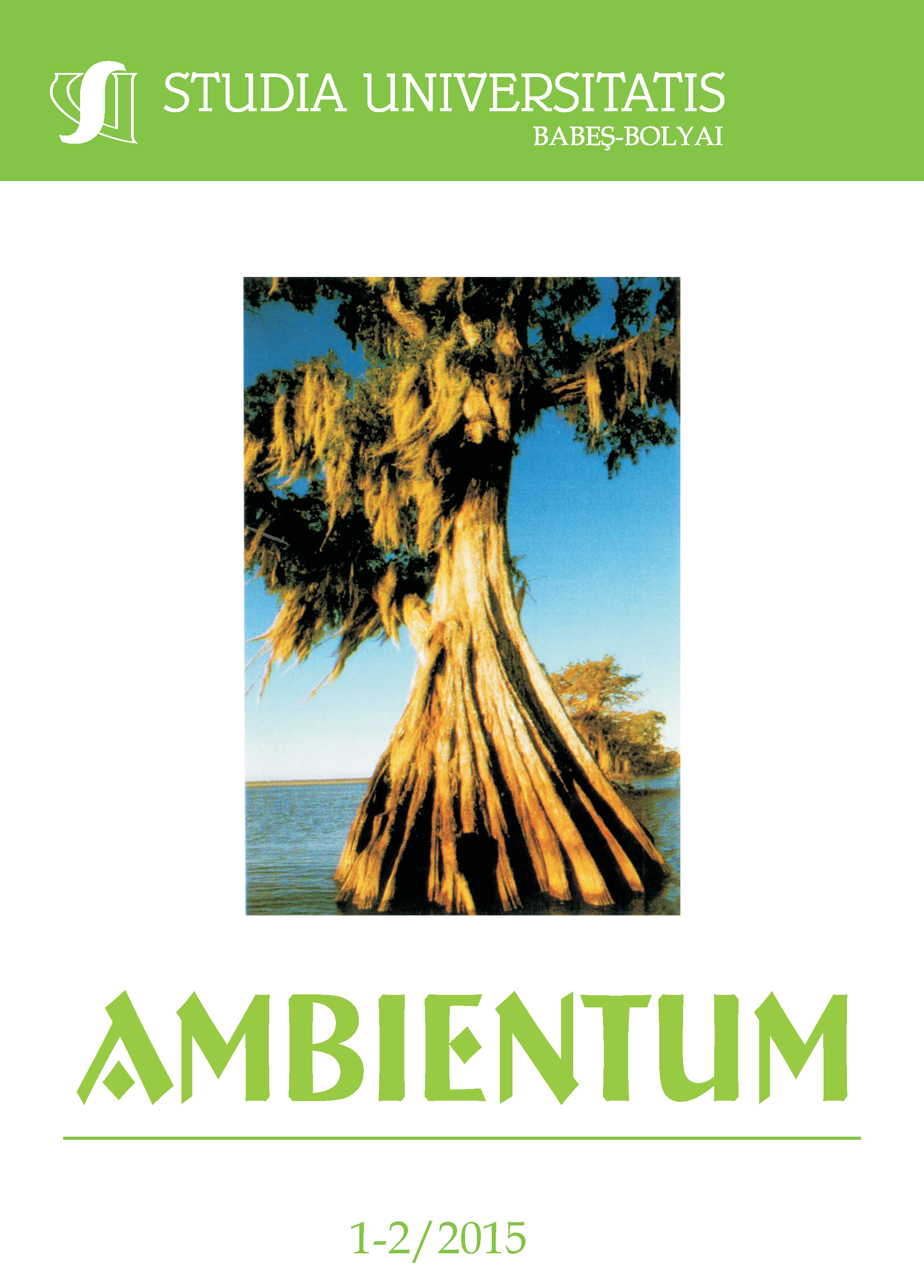CHILDREN'S EXPOSURE TO LEAD AND CADMIUM IN BAIA MARE AREA, ROMANIA
Keywords:
urinary cadmium, blood lead levels, children, exposureAbstract
The objective of this study was to assess children's exposure to lead and cadmium in the Baia Mare area, a place known for its heavy metal contamination resulted from the mining activities carried out in the past. Blood and urine samples were collected from 33 children ages between 2 years and 8 months to 14 years. The parents of all 33 children completed a questionnaire; the questionnaire provided information on the demographic characteristics, playground activities and health data in particular. Urinary cadmium was measured with the help of atomic absorption spectrometers with a graphite furnace, and the lead in the blood was determined with the help of anodic stripping voltammetry. The median values of the biomarkers were of 0.99 μg/L (ranging between 0.40-2.66 μg/L) for urinary cadmium and 3.3 μg/dL (ranging between 1.3-13 μg/dL) for lead in the blood, both being below the general reference levels of the population. A positive association was found between urinary cadmium and the age of the participants: the concentration of the cadmium levels in the urine increased with age (p = 0.026). Statistically significant differences were found between blood lead levels and children playing in the sand (p = 0.018). Although such an approach requires substantial resources in order to develop scientific models to analyze the environment-health relationship, it is very important to expand this pilot study to a larger population, children representing the group of population with an increased susceptibility to lead and cadmium exposures.
References
ATSDR (Agency for Toxic Substances and Disease Registry), 2000, Case Studies in Environmental Medicine – Lead toxicity- revision date.
ATSDR (Agency for Toxic Substances and Disease Registry), 2012, Toxicological Profile for Cadmium. Agency for Toxic Substances Disease Registry, Atlanta, GA: U.S. Department of Health and Human Services, Public Health Service. Available from: http://www.atsdr.cdc.gov/toxprofiles/tp.asp?id=48&tid=15.
Bellinger D. C., 2008, Very low lead exposures and children’s neurodevelopment. Current Opinion in Pediatrics, 20, pp.172-177.
Berglund M., Lind B., Sorensen S., Vahter, M, 2000, Impact of soil and dust lead on children’s blood lead in contaminated areas of Sweden. Arch. Environ. Health, 55, pp. 93-97.
Bjerre B., Berglund M., Harsbo K., Hellman B., 1993, Blood lead concentrations of Swedish preschool children in a community with high lead levels from mine waste in soil and dust. Scand. J. Environ. Health, 19, pp. 154-161.
Carvalho F.M., Barreto M.L., Silvany-Neto A.M., Waldron H.A., Tavares T.M, 1985, Multiple causes of anaemia amongst children living near a lead smelter in Brazil. Sci. Total Environ, 35, pp. 71-84.
Chiodo L.M., Jacobson S.W., Jacobson J.L., 2004, Neurodevelopmental effects of postnatal lead exposure at very low levels. Neurotoxicology and Teratolog, 26(3), pp. 359–371.
Getaneh Z., Mekonen S., Ambelu A., 2014, Exposure and Health Risk Assessment of Lead in Communities of Jimma Town, Southwestern Ethiopia. Bull Environ Contam Toxicol. 93(2), pp. 245-250.
Gonick H.C., 2008, Nephrotoxicity of cadmium & lead. Indian Journal of Medical Research, 128(4), pp. 335-352.
Lanphear B.P., Hornung R., Khoury J., Yolton K., Baghurst P., Bellinger D.C., 2005, Low-Level Environmental Lead Exposure and Children's Intellectual Function: An International Pooled Analysis. Environmental Health Perspectives, 113(7), pp. 894-899.
Murgueytio A.M., Evans R.G., Sterling D.A., Clardy S.A., Shadel B.N., Clements B.W., 1998, Relationship between lead mining and blood lead levels in children. Arch. Environ. Health, 53, pp. 414-423.
Paoliello M.M., De Capitani E.M., da Cunha F.G., Matsuo T., Carvalho M. de F., Sakuma A., Figueiredo B.R., 2002, Exposure of Children to Lead and Cadmium from a Mining Area of Brazil. Environmental Research, 88, pp. 120-128.
Papanikolaou N.C., Hatzidaki E.G., Belivanis S., Tzanakakis G.N., Tsatsakis A.M., 2005. Lead toxicity update. A brief review. Medical science monitor, 11(10), pp. 329-336.
Rong L.P., Xu Y.Y., Jiang X.Y., 2014, Heavy metal poisoning and renal injury in children. Zhongguo Dang Dai Er Ke Za Zhi, 16(4), p. 325-329.
Silvany-Neto A.M., Carvalho F.M., Tavares T.M., Guimarães G.C., Amorim C.J., Peres M.F., Lopes R.S., Rocha C.M., Raña M.C., 1996, Lead poisoning among children of Santo Amaro, Bahia, Brazil in 1980, 1985, and 1992. Bulletin of the Pan American Health Orgnanization. 30(1), pp. 51-62.
WHO (World Health Organisation), 2002, Children’s health and environment: a review of evidence. Neurodevelopmental disorders lead. Environmental issue report.
Yapici G., Can G., Kiziler A.R., Aydemir B., Timur I.H., Kaypmaz A., 2006, Lead and cadmium exposure in children living around a coal-mining area in Yatagan, Turkey. Toxicology and Industrial Health, 22, pp. 357-362.
Downloads
Published
How to Cite
Issue
Section
License
Copyright (c) 2015 Studia Universitatis Babeș-Bolyai Ambientum

This work is licensed under a Creative Commons Attribution-NonCommercial-NoDerivatives 4.0 International License.





 ISSN (online): 2065-9490 | ISSN (print): 1843-3855 | ISSN-L: 2065-9490
ISSN (online): 2065-9490 | ISSN (print): 1843-3855 | ISSN-L: 2065-9490